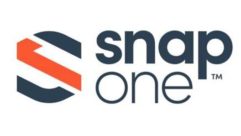NSCA STRIKES BACK
Apr 1, 2001 12:00 PM,
Nathaniel Hecht, editor
THIS YEAR’S NSCA SHOW IN ORLANDO WAS THE SITE OF A SIGNIFICANT announcement concerning the future of our industry. As most of you know, education has long been the hallmark of the NSCA, and through the years many important classes furthering our collective industrial knowledge have been offered with excellent results. Without these efforts, as well as the efforts of NSCA lobbying in Washington to protect our businesses, we might not have attained the current levels of success we are now experiencing.
The fact that the average age of contractors in our industry is on the rise is well documented; this has been the subject of many of my editorials. The problem has been getting the message to young people that we exist and that we are a viable industry to enter for a life-long career that is both stimulating and profitable.
Recently, after many years of lobbying the U.S. Department of Labor, the NSCA has established a new Standard Occupational Classification (SOC) for Electronic Systems Technicians (ESTs). This historic event allows for the first time a separate classification for ESTs under “Communications Equipment” not “Electrical Equipment,” further differentiating our industry’s work from electricians. The federally mandated code in The Dictionary of Occupational Titles, number 823261901, will be associated with the primary career cluster section 49, one that is used for installation and maintenance careers rather than cluster section 47 that is exclusive for construction. Many colleges and universities build their course offerings around these occupational codes, so this designation is a big advantage in furthering growth and recognition of our industry as a promising career path.
Eventually the SOC code will also affect workers’ compensation rates, wage rates and many other key issues. Since the SOC is federally mandated, it must now be adopted by each state as the next step in the process. For the NSCA, the next steps are to associate an apprenticeship program with the new SOC, an ongoing effort that the NSCA has already spent hundreds of hours developing. This apprenticeship program is awaiting approval from the Department of Labor’s Bureau of Apprenticeship and Training, so it is just a matter of time. This action is the beginning of a very important era in the continued strength of our industry and helps guarantee that we will continue to exist and thrive despite efforts by those who continue to try to wrestle our business away through politics.
We commend the efforts of Chuck Wilson and the rest of the NSCA staff in achieving these fantastic goals. We are honored to be a part of their success, in support of the NSCA and their efforts. We will continue to report on NSCA events and actions via our new department “NSCA Update” each month in S&VC.








